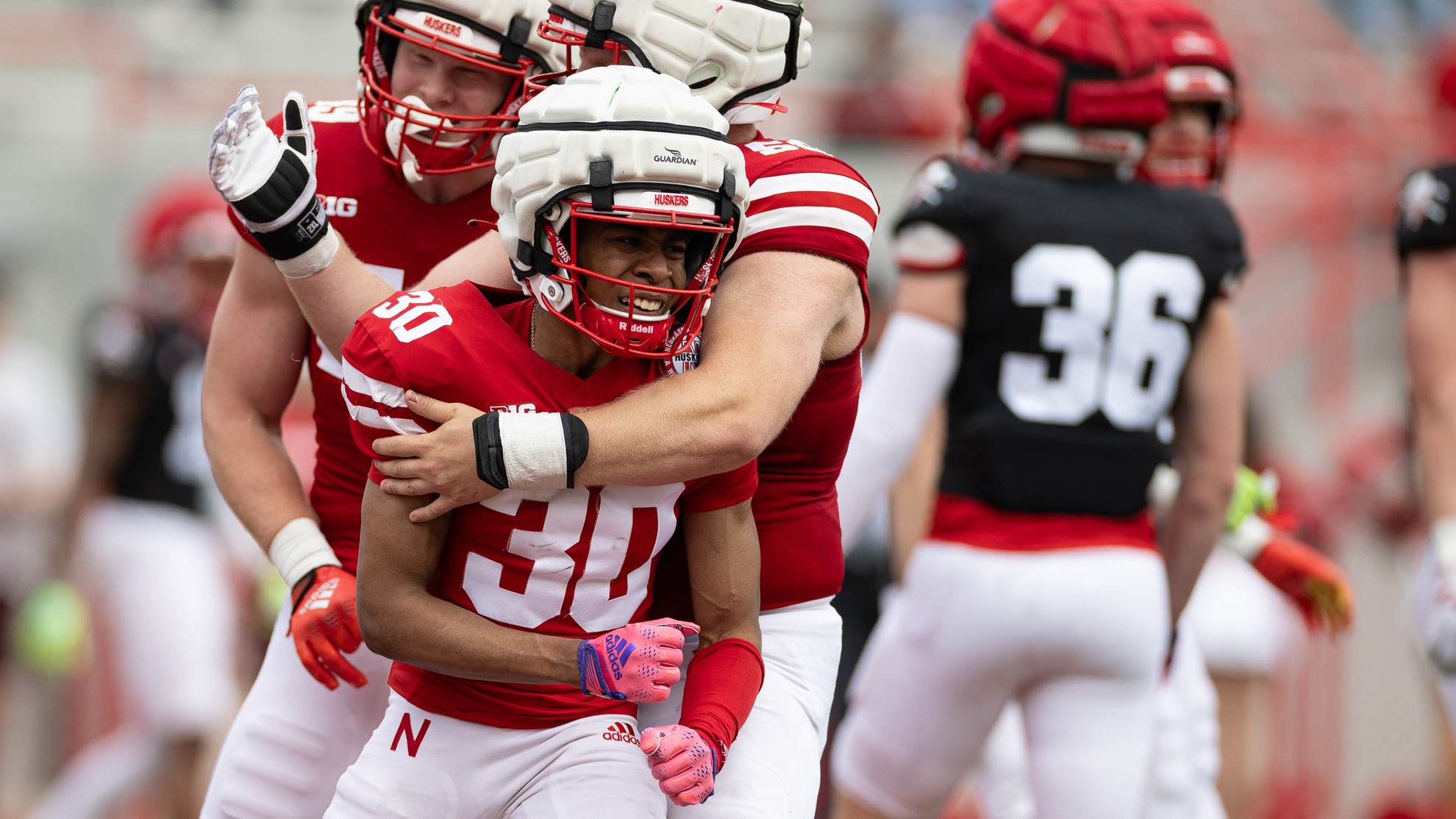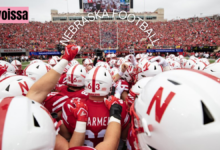Nebraska Football: The Storied Legacy, Current Landscape, and Bright Future of the Cornhuskers”

nebraska football: A Legacy Rooted in Red
If you’ve ever been to Nebraska, chances are you’ve seen a sea of red, heard the word “Huskers,” or noticed a quiet reverence for Saturday football. Nebraska football isn’t just a sport—it’s a cultural phenomenon. It’s what bonds generations of families and towns across the state. It’s tradition, pride, and, for many, a way of life.
From its humble beginnings in the 1890s to its powerhouse status in the 1990s, Nebraska football has been through it all. It has seen national championships, heartbreaking losses, coaching legends, and rebuilding seasons. But through every high and low, one thing remains constant: the passionate support of the Big Red faithful.
Let’s take a deep dive into the storied legacy of Nebraska football, explore its current state, and examine what the future may hold. Whether you’re a lifelong fan or just getting into the game, this journey through Nebraska football will show you why it’s one of the most beloved programs in college sports.
Chapter One: The Origins of a Titan
Long before Nebraska was a national football powerhouse, it was just a program trying to find its identity. The team was first established in 1890, and though those early years were filled with inconsistencies and rough patches, the seeds of greatness were being planted.
By the early 1900s, nebraska football was becoming a more competitive program, thanks in part to forward-thinking coaches and dedicated players. The Cornhuskers began to dominate regional opponents, and Memorial Stadium—now one of the most iconic venues in college football—was constructed in 1923.
The stadium became more than just a place for games. It became a symbol of nebraska football pride. With the inscription “Not the victory but the action; Not the goal but the game; In the deed the glory” above its entrance, Memorial Stadium embodied the state’s grit and resilience.
Throughout the mid-20th century, the program saw incremental growth. Coaches came and went, and while success was steady, it wasn’t yet elite. But that all changed in the early 1960s, setting the stage for a golden era.
Chapter Two: The Devaney and Osborne Dynasties

The arrival of Bob Devaney in 1962 marked a turning point for Nebraska football. Devaney brought a new energy and vision to the program, and in just his second season, Nebraska won its first national title in 1970. The Huskers followed that up with another title in 1971, officially launching Nebraska into the upper echelon of college football.
Devaney’s successor, Tom Osborne, took over in 1973 and built on that legacy with unwavering focus and innovation. Osborne’s tenure would last 25 years, during which he became one of the most respected and successful coaches in the history of the sport.
From the mid-1970s through the 1990s, Nebraska was a consistent national contender. The Huskers won three national championships in the 1990s (1994, 1995, 1997), with the ’95 team often cited as one of the greatest in college football history. Under Osborne, Nenebraska football braska developed a fearsome reputation for physicality, discipline, and dominance in the trenches.
The Osborne era wasn’t just about wins—it was about building character, promoting academic excellence, and developing future leaders. His impact went beyond football and left a lasting legacy on the university and state.
Chapter Three: The Post-Osborne Era and Coaching Carousel
When Tom Osborne retired in 1997, nebraska football fans knew the transition wouldn’t be easy. What followed, however, was more turbulent than anyone expected. Frank Solich, a longtime assistant under Osborne, took the reins and had early success, even taking the team to the national title game in 2001.
Despite a solid record, Solich was fired in 2003—a controversial decision that many fans still debate. His departure marked the beginning of a coaching carousel that included names like Bill Callahan, Bo Pelini, Mike Riley, and Scott Frost. Each brought their own style and vision, but none could replicate the consistent success of the Osborne years.
The instability took its toll. nebraska football moved from the Big 12 to the Big Ten in 2011, hoping for a fresh start and a new set of rivalries. While the move brought financial benefits and academic alignment, it also posed new challenges on the field. Adjusting to different styles of play and recruiting landscapes proved harder than anticipated.
Fan expectations remained sky-high, but the program was clearly searching for its identity in a modern college football landscape. While there were flashes of brilliance—like Pelini’s string of nine-win seasons—they weren’t enough to satisfy a fanbase hungry for championships.
Chapter Four: The Scott Frost Experiment
When nebraska football hired Scott Frost in 2017, it felt like the perfect storybook reunion. Frost was the hometown hero—the quarterback of the ’97 national championship team—returning to restore glory to the program he once led on the field.
Frost came with a stellar resume after an undefeated season at UCF, and expectations were sky-high. But from the very beginning, things didn’t go as planned. Close losses, injuries, and inconsistency plagued his tenure. Despite high hopes, the wins never came in bunches.
By the time Frost was let go in 2022, it was clear that the emotional appeal of hiring an alumnus wasn’t enough. The team struggled with fundamentals, discipline, and often looked unprepared against Big Ten foes. Yet through it all, Husker fans remained loyal, showing up in droves and keeping the sellout streak alive—a testament to the unique bond between the program and its people.
Frost’s time wasn’t a total failure; it brought some needed upgrades in facilities and a renewed commitment to player development. But ultimately, it served as a harsh reminder that success in college football is never guaranteed, no matter how compelling the narrative may be.
Chapter Five: A New Dawn with Matt Rhule
In late 2022, Nebraska turned the page once more, this time hiring Matt Rhule—a coach known for turning around struggling programs at Temple and Baylor. Unlike Frost, Rhule wasn’t a former Husker, but he brought a strong reputation for culture-building and resilience.
Rhule’s approach has been methodical. He’s focused on fundamentals, instilling toughness, and rebuilding the program from the ground up. Early signs suggest that his leadership is resonating. Players are buying in, recruiting is improving, and there’s a renewed sense of purpose in the locker room.
It won’t be an overnight turnaround, and Rhule has been honest about the challenges ahead. But for the first time in years, there’s cautious optimism in Lincoln. With Rhule’s track record and the unwavering support of the fanbase, the future is starting to look bright again.
Chapter Six: The Passionate Fanbase and Culture
What truly sets Nebraska football apart is its fans. The Cornhuskers have sold out every home game since 1962—a streak that spans decades of ups and downs. It’s not just loyalty; it’s love. For many, Nebraska football is part of their identity.
The atmosphere in Memorial Stadium on game day is electric. The chants, the traditions, the sea of red—it’s an experience like no other. And it’s not limited to Lincoln. Across the state, towns shut down on Saturdays, radios blast the game, and families gather around TVs in living rooms and garages.
Win or lose, fans show up. That kind of passion can’t be bought or manufactured. It’s cultivated over generations. And it’s what makes Nebraska football one of the most enduring and beloved programs in college sports.
Chapter Seven: The Recruiting Pipeline and Player Development
Recruiting in Nebraska isn’t easy. It’s a state without a huge population and far from traditional hotbeds of talent. But that’s never stopped the Huskers from finding and developing elite players.
Over the years, Nebraska has built pipelines in Texas, California, and the Midwest. They’ve also placed a strong emphasis on walk-ons—players who weren’t highly recruited but had the heart and work ethic to make an impact.
Some of the program’s greatest legends started as walk-ons. The commitment to player development, strength training, and mental toughness has long been a cornerstone of Nebraska football. Under Matt Rhule, that tradition is continuing, with a renewed focus on finding players who fit the culture and will grow within it.
Chapter Eight: Looking Ahead – A Vision for the Future
As college football continues to evolve—with NIL deals, the transfer portal, and conference realignments—Nebraska must adapt to stay competitive. The good news is, the program is making those strides.
Investments in facilities, academic support, and branding have made Nebraska an appealing destination for recruits. Rhule and his staff are building relationships, identifying underrated talent, and preaching a message of accountability and growth.
It may take time, but with the right leadership and support, Nebraska can once again be a force in college football. The foundation is there, the fanbase is unmatched, and the vision is clear. The Cornhuskers are on the rise—and the best may be yet to come.
Conclusion: More Than a Game
Nebraska football isn’t just about wins and losses. It’s about tradition, resilience, and community. It’s about farmers tuning in after a long day in the fields, kids dreaming of wearing the scarlet and cream, and generations coming together every fall Saturday.
The road back to national prominence won’t be easy. But if there’s one thing Nebraska has proven time and again, it’s that it never stops fighting. The Cornhuskers are built on grit, heart, and a belief that greatness is always within reach.
